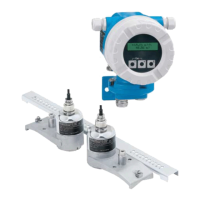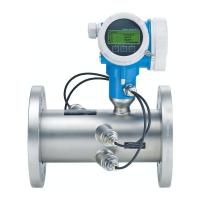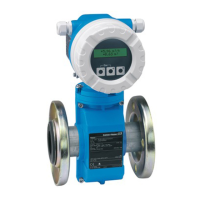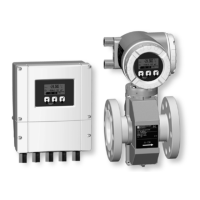Proline Prosonic Flow P 500
12 Endress+Hauser
Nominal diameter [mm (")]
Kinematic viscosity cSt [mm
2
/s]
0 < v ≤ 10 10 < v ≤ 100 100 < v ≤ 1000
Converter frequency (sensor version/number of traverses)
1)
> 500 to 1 000 (20 to 40) 0.3 MHz (C-030 / 1) – –
> 1 000 to 4 000 (40 to 160) 0.3 MHz (C-030 / 1) – –
1) Table shows a typical selection: In critical cases (large pipe diameter, liner, gas or solid inclusions) the optimum sensor type may differ from these
recommendations.
• If clamp-on sensors are used, a 2 traverse-type installation is recommended. This is the
easiest and most convenient type of installation, particularly for measuring devices whose
measuring pipe is difficult to access from one side.
• A 1 traverse installation is recommended for the following installation conditions:
• Certain plastic measuring pipes with a wall thickness of >4 mm (0.16 in)
• Measuring pipes made of composite materials (e.g. glass-fiber reinforced plastic)
• Lined measuring pipes
• Applications with media with high acoustic damping
• High-temperature applications (>170°C), order code "Process temperature", options H, I, J:
configuration and sizing of the measuring point using the Applicator is recommended.
Measuring mode
Two-path measurement with FlowDC
3)
(standard configuration)
In the case of two-path measurement with FlowDC, the flow is measured by two measurements at
the measuring point.
For this, the two sensor sets are installed on the measuring pipe, offset at a specific angle to one
another (180° for 1 traverse, 90° for 2 traverses, angle tolerance ±5°). This arrangement is
independent of the circumferential position of the two sensor sets on the measuring pipe.
The measured values of both sensor sets are averaged. The resulting measurement error is
compensated based on the type of interference, the distance from the measuring point to the
disturbance point, and the Reynolds number. The error-compensated average thus ensures that the
specified maximum measurement error and repeatability are maintained even under non-ideal flow
conditions (see for example → 33, 42).
The configuration of the two measuring paths is only performed once and is adopted for both
measuring paths.
3) Flow disturbance compensation
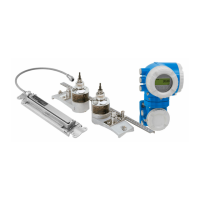
